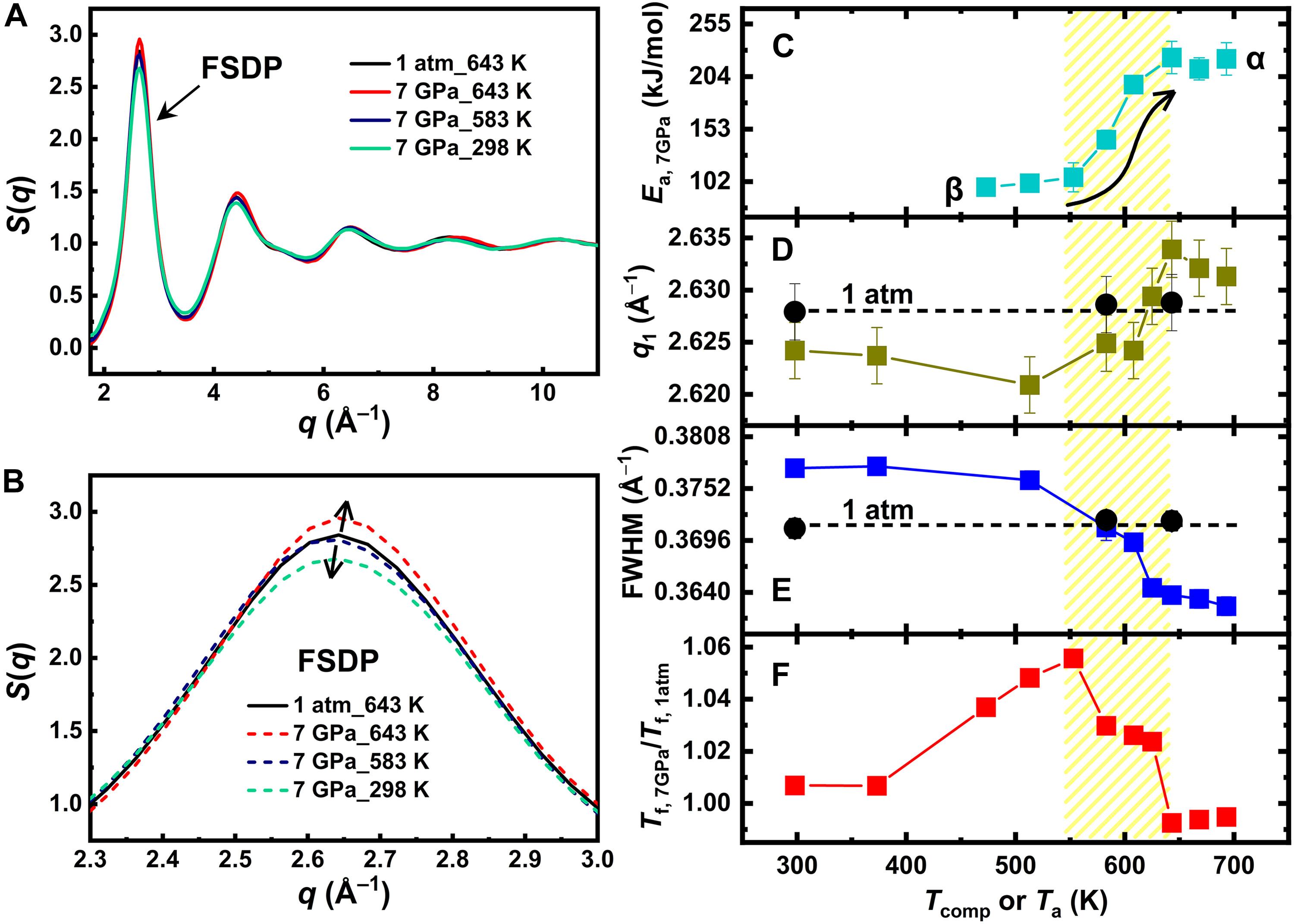Linking the pressure dependence of the structure and thermal stability to α- and β-relaxations in metallic glasses
IF 12.5
1区 综合性期刊
Q1 MULTIDISCIPLINARY SCIENCES
引用次数: 0
Abstract
Glasses derive their functional properties from complex relaxation dynamics that remain enigmatic under extreme conditions. Although the temperature dependence of these relaxation processes is well established, their behavior under high-pressure conditions remains poorly understood due to substantial experimental difficulties. In this study, we use cutting-edge experimental techniques to probe the pressure evolution of the relaxation spectrum in a Zr46.8Ti8.2Cu7.5Ni10Be27.5 metallic glass across gigapascal pressure ranges. Our findings reveal two distinct relaxation mechanisms under high pressure: In the β-relaxation regime, compression drives the system with reduced atomic mobility and enhanced structural disorder, without appreciable density changes. Conversely, α-relaxation under pressure promotes density-driven structural ordering that improves thermal stability. Notably, the transition between these regimes occurs at a constant T/Tg,P ratio, independent of applied pressure. These results provide crucial insights for decoupling the competing structural and relaxation contributions to glass stability, establishing a systematic framework for tailoring glass properties through controlled thermomechanical processing.

金属玻璃结构和热稳定性的压力依赖性与α-和β-弛豫的联系
玻璃的功能特性来源于复杂的弛豫动力学,在极端条件下仍然是谜。虽然这些弛豫过程的温度依赖性已经很好地建立了,但由于大量的实验困难,它们在高压条件下的行为仍然知之甚少。在这项研究中,我们使用尖端的实验技术来探测Zr 46.8 Ti 8.2 Cu 7.5 Ni 10 Be 27.5金属玻璃在千兆帕斯卡压力范围内的弛豫谱的压力演变。我们的发现揭示了高压下两种不同的弛豫机制:在β-弛豫机制下,压缩驱动系统,原子迁移率降低,结构无序性增强,而密度没有明显变化。相反,α-弛豫在压力下促进了密度驱动的结构有序,提高了热稳定性。值得注意的是,这些状态之间的转变发生在恒定的T / T g,P比下,与施加的压力无关。这些结果为解耦相互竞争的结构和弛豫对玻璃稳定性的影响提供了重要的见解,并建立了通过受控的热机械加工来定制玻璃性能的系统框架。
本文章由计算机程序翻译,如有差异,请以英文原文为准。
求助全文
约1分钟内获得全文
求助全文
来源期刊

Science Advances
综合性期刊-综合性期刊
CiteScore
21.40
自引率
1.50%
发文量
1937
审稿时长
29 weeks
期刊介绍:
Science Advances, an open-access journal by AAAS, publishes impactful research in diverse scientific areas. It aims for fair, fast, and expert peer review, providing freely accessible research to readers. Led by distinguished scientists, the journal supports AAAS's mission by extending Science magazine's capacity to identify and promote significant advances. Evolving digital publishing technologies play a crucial role in advancing AAAS's global mission for science communication and benefitting humankind.
 求助内容:
求助内容: 应助结果提醒方式:
应助结果提醒方式:


